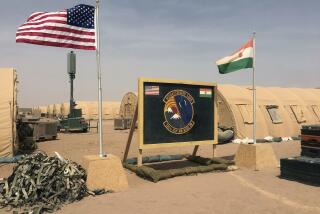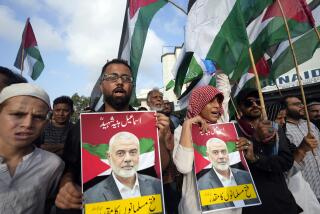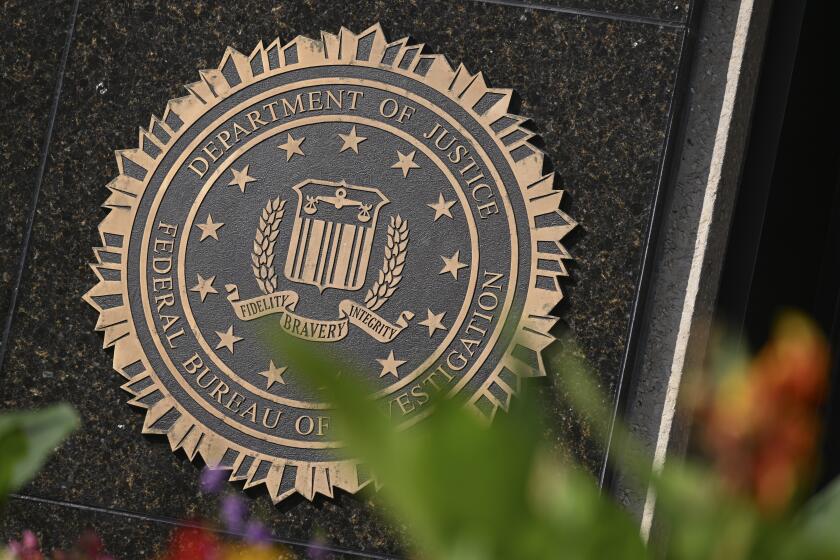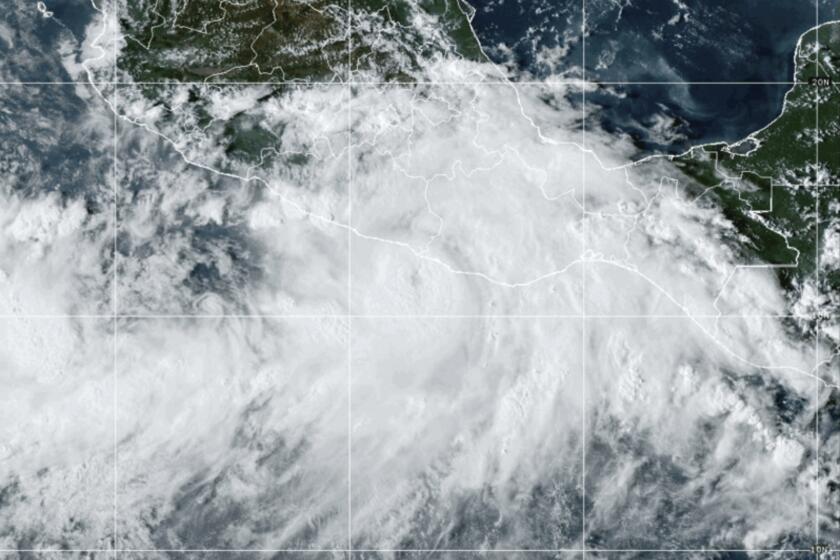Rift in Syria opposition may set back Western efforts
The sacking last week of the commander of the Free Syrian Army appears to be driving a wedge among factions of the loosely organized Western-backed network of rebel forces at a crucial moment in the three-year civil war to oust Syrian President Bashar Assad.
The rift, analysts and rebels say, could undermine efforts to redirect Western support to rebels in southern Syria as part of a strategy to bolster the opposition there to counter the growing power of Islamist and Al Qaeda affiliates in the north.
Many rebel commanders have come out in support of Gen. Salim Idriss and denounced the decision by the group’s command overseer, the Supreme Military Council.
One of those continuing to support Idriss is Bashar Zoubi, who commands the southern front, a region that includes the provinces of Dara, Quneitra and parts of south Damascus. It is one of five military districts the country has been divided into by rebel forces.
Idriss tweeted Friday, “There is a hidden dispute that is the main cause of all this divide. Geo-politics will only destroy Syria more before it offers a solution.”
He did not specify what the “hidden dispute” is.
Others have indicated that the Supreme Military Council and the Western-backed Syrian National Coalition and its provisional government may be trying to control the situation from afar.
“We are the commanders of the fronts and the military councils that are working on the battlefields,” Col. Fateh Hassoun, who leads the FSA’s central front, said in an online video. “We consider the removal of Chief of Staff Gen. Salim Idriss an unacceptable and illegitimate decision.”
Beyond internal politics, the mounting rift could affect Western support to rebels in southern Syria. With the Geneva II peace talks’ failure to bring a cessation of the conflict, U.S. officials said shipments of light weapons to southern Syria had resumed. Congress has approved funding for weapons deliveries through the end of September, one U.S. official said.
“The strategy is being undermined by fragmentation,” said Joshua Landis, director of the Center for Middle East Studies at the University of Oklahoma.
The Syrian National Coalition, the main political opposition group, immediately praised the decision to remove Idriss and called it “part of a renewed effort by the opposition to reenergize support to the SMC at a critical time in the revolution.”
In December, the Islamic Front seized the military council’s headquarters and weapons warehouse along the Turkish border, taking arms, medical supplies and communication equipment. In response, the U.S. suspended nonlethal aid to the armed opposition in northern Syria.
Col. Qassim Saad Eddine, a council spokesman who announced Idriss’ removal, said the FSA would soon open a new headquarters in southern Syria along the Jordanian border for Idriss’ replacement, Brig. Gen. Abdullah Bashir.
Bashir leads the military council in the southern province of Quneitra, which borders Israel.
Idriss, much like the SMC, was never seen as an effective military leader but rather as a key conduit for lethal and nonlethal aid and money from outside backers, mostly Persian Gulf Arab states, to some of the rebel groups trying to oust Assad.
For the United States and other Western nations, which have been criticized for doing too little to end the bloodshed, focusing their efforts on the south could be one of the last opportunities to maintain influence in the country.
Saad Eddine said the removal of Idriss was an internal decision, part of a restructuring of the group’s command. He denied that it was a result of external pressure or that arms shipments or assurances of advanced weapons to southern Syria hinged on naming a leader from the south.
“In the south there aren’t extremist groups and it is easier for the donors to be comfortable giving advanced weapons,” he said.
Aron Lund, editor of the Carnegie Endowment’s Syria in Crisis website, said, “I do think there are larger shifts afoot in the way the insurgency is being funded and led.
“Idriss is probably a casualty of this restructuring,” he added.
U.S. Director of National Intelligence James R. Clapper recently compared rebel-controlled parts of northern Syria to the federally administered tribal areas of Pakistan, a refuge for militants.
Although FSA groups, namely the Syria Revolutionaries Front, maintain a presence in the north, they are often overshadowed by the Islamist groups.
“Putting more effort into a less heavily Islamist and more easily manageable southern front might seem a good parallel strategy, to weaken the regime and force it to accept a deal of some sort,” Lund said.
Lt. Col. Mohammad Khair Harbaat, a member of the Dara Military Council, said there has been a recent influx of money from the joint operations command center in Jordan with military officials from the U.S., Europe and Arab nations.
“They … are preparing for a semi-buffer zone,” Harbaat said. “The focus on the southern front is because of a fear for Israel’s security.”
The United States and Saudi Arabia are the main powers behind the change in SMC leadership and the shift south, he said.
A source close to the opposition said weapons shipments to southern Syria had arrived regularly since late January but became sporadic after the turmoil with the SMC began. The weapons included anti-tank missiles, AK-47s and rocket launchers. There has been no mention of antiaircraft weapons.
If the goal is to exert political pressure on Assad and his allies by strengthening the rebels militarily, then the southern front is the best positioned geographically, said Dan Layman, a spokesman for the Syrian Support Group, an opposition advocacy group with offices in Washington. “It’s sort of like a whole new game in the south.”
Times staff writer Ken Dilanian in Washington contributed to this report.
More to Read
Sign up for Essential California
The most important California stories and recommendations in your inbox every morning.
You may occasionally receive promotional content from the Los Angeles Times.











